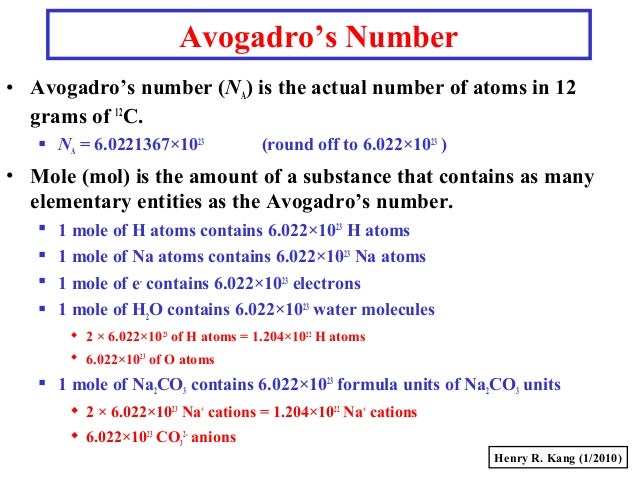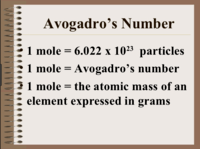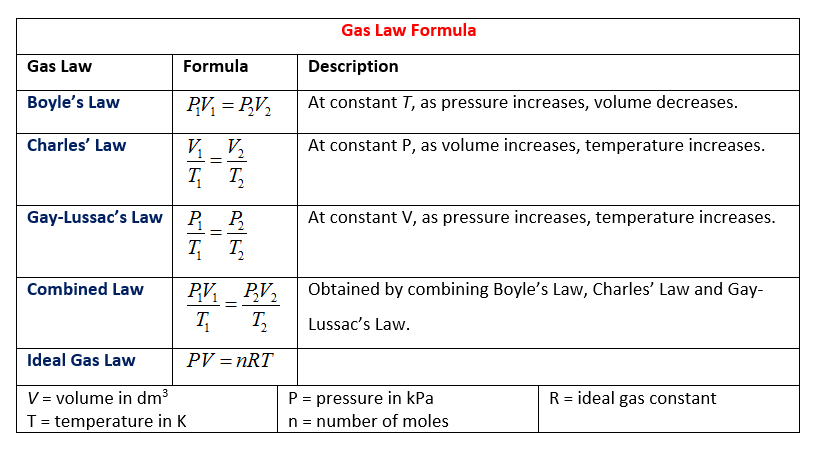Contrary to the beliefs of generations of chemistry students, Avogadro’s number—the number of particles in a unit known as a mole—was not discovered by Amadeo Avogadro (1776-1856). Avogadro was a lawyer who became interested in mathematics and physics, and in 1820 he became the first professor of physics in Italy. Avogadro is most famous for his hypothesis that equal volumes of different gases at the same temperature and pressure contain the same number of particles.
PBR, Miller Lite, Accumulation, Old Aggie, Fat Tire, 90 Shilling, Sipping Pretty, Odell IPA, Rupture, Left Hand Glider Cider Semi-Dry. Avogadro is an advanced molecule editor and visualizer designed for cross-platform use in computational chemistry, molecular modeling, bioinformatics, materials science, and related areas. It offers flexible high quality rendering and a powerful plugin architecture. Avogadro's number, 6.022. 10 23 is the number of things in one mole. The question indicates that there is 1 mole of H 2. Thus there are 6.022. 10 23 molecules of H 2. However the question is asking for the amount of atoms in 1 mole of H 2. Since Avogadro's number is 6.022 × 10 23, it only makes sense that the holiday starts at 6:02 a.m. Revelers tell chemistry jokes, blow bubbles of natural gas that they set ablaze, toast with drinks chilled by dry ice and even recite the mole pledge of allegiance.
The first person to estimate the actual number of particles in a given amount of a substance was Josef Loschmidt, an Austrian high school teacher who later became a professor at the University of Vienna. In 1865 Loschmidt used kinetic molecular theory to estimate the number of particles in one cubic centimeter of gas at standard conditions. This quantity is now known as the Loschmidt constant, and the accepted value of this constant is 2.6867773 x 1025 m-3.
The term “Avogadro’s number” was first used by French physicist Jean Baptiste Perrin. In 1909 Perrin reported an estimate of Avogadro’s number based on his work on Brownian motion—the random movement of microscopic particles suspended in a liquid or gas. In the years since then, a variety of techniques have been used to estimate the magnitude of this fundamental constant.
Accurate determinations of Avogadro’s number require the measurement of a single quantity on both the atomic and macroscopic scales using the same unit of measurement. This became possible for the first time when American physicist Robert Millikan measured the charge on an electron. The charge on a mole of electrons had been known for some time and is the constant called the Faraday. The best estimate of the value of a Faraday, according to the National Institute of Standards and Technology (NIST), is 96,485.3383 coulombs per mole of electrons. The best estimate of the charge on an electron based on modern experiments is 1.60217653 x 10-19 coulombs per electron. If you divide the charge on a mole of electrons by the charge on a single electron you obtain a value of Avogadro’s number of 6.02214154 x 1023 particles per mole.
Another approach to determining Avogadro’s number starts with careful measurements of the density of an ultrapure sample of a material on the macroscopic scale. The density of this material on the atomic scale is then measured by using x-ray diffraction techniques to determine the number of atoms per unit cell in the crystal and the distance between the equivalent points that define the unit cell (see Physical Review Letters, 1974, 33, 464).
Avogadro Number Calculations II
How Many Atoms or Molecules?
The value I will use for Avogadro's Number is 6.022 x 1023 mol¯1.
Types of problems you might be asked look something like these:
0.450 mole of Fe contains how many atoms? (Example #1)0.200 mole of H2O contains how many molecules? (Example #2)
0.450 gram of Fe contains how many atoms? (Example #3)
0.200 gram of H2O contains how many molecules? (Example #4)
When the word gram replaces mole, you have a related set of problems which requires one more step.
And, two more:
0.200 mole of H2O contains how many atoms?
0.200 gram of H2O contains how many atoms?
When the word gram replaces mole, you have a related set of problems which requires one more step. In addition, the two just above will have even another step, one to determine the number of atoms once you know the number of molecules.
Here is a graphic of the procedure steps:
Pick the box of the data you are given in the problem and follow the steps toward the box containing what you are asked for in the problem.
Example #1: 0.450 mole of Fe contains how many atoms?
Solution:
Start from the box labeled 'Moles of Substance' and move (to the right) to the box labeled 'Number of Atoms or Molecules.' What do you have to do to get there? That's right - multiply by Avogadro's Number.0.450 mol x 6.022 x 1023 mol¯1 = see below for answer
Example #2: 0.200 mole of H2O contains how many molecules?
Solution:
Start at the same box as Example #1.0.200 mol x 6.022 x 1023 mol¯1 = see below for answer
The answers (including units) to Examples #1 and #2
The unit on Avogadro's Number might look a bit weird. It is mol¯1 and you would say 'per mole' out loud. The question then is WHAT per mole?
The answer is that it depends on the problem. In the first example, I used iron, an element. Almost all elements come in the form of individual atoms, so the correct numerator with most elements is 'atoms.' (The exceptions would be the diatomic elements plus P4 and S8.)
So, doing the calculation and rounding off to three sig figs, we get 2.71 x 1023 atoms. Notice 'atoms' never gets written until the end. It is assumed to be there in the case of elements. If you wrote Avogadro's Number with the unit atoms/mol in the problem, you would be correct.
The same type of discussion applies to substances which are molecular in nature, such as water. So the numerator I would use in example #2 is 'molecule' and the answer is 1.20 x 1023 molecules.
Once again, the numerator part of Avogadro's Number depends on what is in the problem. Other possible numerators include 'formula units,' ions, or electrons. These, of course, are all specific to a given problem. When a general word is used, the most common one is 'entities,' as in 6.022 x 1023 entities/mol.
Keep this in mind: the 'atoms' or 'molecules' part of the unit is often omitted and simply understood to be present. However, it will often show up in the answer. Like this:
0.450 mol x 6.022 x 1023 mol¯1 = 2.71 x 1023 atoms
It's not that a mistake was made, it's that the 'atoms' part of atoms per mole was simply assumed to be there.
Example #3: 0.450 gram of Fe contains how many atoms?
Example #4: 0.200 gram of H2O contains how many molecules?
Look at the solution steps in the image above and you'll see we have to go from grams (on the left of the image above) across to the right through moles and then to how many atoms or molecules.
Avogadro's Number Molar Mass
Solution to Example #3:
Step One (grams ---> moles): 0.450 g / 55.85 g/mol = 0.0080573 molStep Two (moles ---> how many): (0.0080573 mol) (6.022 x 1023 atoms/mol) = 4.85 x 1021 atoms
Solution to Example #4:
Step One: 0.200 g / 18.015 g/mol = 0.01110186 molStep Two: (0.01110186 mol) (6.022 x 1023 molecules/mol) = 6.68 x 1021 molecules
Example #5: Calculate the number of molecules in 1.058 mole of H2O
Solution:
(1.058 mol) (6.022 x 1023 mol¯1) = 6.371 x 1023 molecules
Example #6: Calculate the number of atoms in 0.750 mole of Fe

Solution:
(0.750 mol) (6.022 x 1023 mol¯1) = 4.52 x 1023 atoms (to three sig figs)
Example #7: Calculate the number of molecules in 1.058 gram of H2O
Solution:
(1.058 g / 18.015 g/mol) (6.022 x 1023 molecules/mole)Here is the solution set up in dimensional analysis style:
| 1 mol | 6.022 x 1023 | |||
| 1.058 g x | ––––––––– | x | –––––––––– | = 3.537 x 1022 molecules (to four sig figs) |
| 18.015 g | 1 mol | |||
| ↑ grams to moles ↑ | ↑ moles to ↑ molecules | |||
Example #8: Calculate the number of atoms in 0.750 gram of Fe
(0.750 gram divided by 55.85 g/mole) x 6.022 x 10 23atoms/mole
23atoms/mole| 1 mol | 6.022 x 1023 | |||
| 0.750 g x | ––––––––– | x | –––––––––– | = 8.09 x 1021 atoms (to three sig figs) |
| 55.85 g | 1 mol |
Example #9: Which contains more molecules: 10.0 grams of O2 or 50.0 grams of iodine, I2?
Solution:
Basically, this is just two two-step problems in one sentence. Convert each gram value to its mole equivalent. Then, multiply the mole value by Avogadro's Number. Finally, compare these last two values and pick the larger value. That is the one with more molecules.
| 1 mol | 6.022 x 1023 | |||
| 10.0 g x | ––––––––– | x | –––––––––– | = number of O2 molecules |
| 31.998 g | 1 mol |
| 1 mol | 6.022 x 1023 | |||
| 50.0 g x | ––––––––– | x | –––––––––– | = number of I2 molecules |
| 253.8 g | 1 mol |
Example #10: 18.0 g of H2O is present. (a) How many oxygen atoms are present? (b) How many hydrogen atoms are present?
Solution:
1) Convert grams to moles:
Avogadro's Number Define
18.0 g / 18.0 g/mol = 1.00 mol
2) Convert moles to molecules:
(1.00 mol) (6.02 x 1023 mol¯1) = 6.02 x 1023 molecules
3) Determine number of atoms of oxygen present:
(6.02 x 1023 molecules) (1 O atom / 1 H2O molecule) = 6.02 x 1023 O atoms
4) Determine number of atoms of hydrogen present:
(6.02 x 1023 molecules) (2 H atoms / 1 H2O molecule) = 1.20 x 1024 H atoms (to three sig figs)
Notice that there is an additional step (as seen in step 3 for O and step 4 for H). You multiply the number of molecules times how many of that atom are present in the molecule. In one molecule of H2O, there are 2 atoms of H and 1 atom of O.
Sometimes, you will be asked for the total atoms present in the sample. Do it this way:
(6.02 x 1023 molecules) (3 atoms/molecule) = 1.81 x 1024 atoms (to three sig figs)
The 3 represents the total atoms in one molecule of water: one O atom and two H atoms.
Example #11: Which of the following contains the greatest number of hydrogen atoms?
(a) 1 mol of C6H12O6
(b) 2 mol of (NH4)2CO3
(c) 4 mol of H2O
(d) 5 mol of CH3COOH
Solution:
1) Each mole of molecules contains N number of molecules, where N equals Avogadro's Number. How many molecules are in each answer:
(a) 1 x N = N
(b) 2 x N = 2N
(c) 4 x N = 4N
(d) N x 5 = 5N
2) Each N times the number of hydrogen atoms in a formula equals the total number of hydrogen atoms in the sample:
(a) N x 12 = 12N(b) 2N x 8 = 16N
(c) 4N x 2 = 8N
(d) 5N x 4 = 20N
(d) is the answer.
Example #12: How many oxygen atoms are in 27.2 L of N2O5 at STP?
Solution:
1) Given STP, we can use molar volume:
27.2 L / 22.414 L/mol = 1.21353 mol

2) There are five moles of O atoms in one mole of N2O5:
(1.21353 mol N2O5) (5 mol O / 1 mol N2O5) = 6.06765 mol O
3) Use Avogadro's Number:
(6.06765 mol O) (6.022 x 1023 atoms O / mole O) = 3.65 x 1024 atoms O (to three sig figs)
Example #13: How many carbon atoms are in 0.850 mol of acetaminophen, C8H9NO2?
How Was Avogadro's Number Found
Solution:

1) There are 8 moles of C in every mole of acetaminophen:
(0.850 mol C8H9NO2) (8 mol C / mol C8H9NO2) = 6.80 mol C
2) Use Avogadro's Number:
(6.80 mol C) (6.022 x 1023 atoms C / mole C) = 4.09 x 1024 atoms C (to three sig figs)
Example #14: How many atoms are in a 0.460 g sample of elemental phosphorus?
Solution:
Phosphorus has the formula P4Avogadro's Number In A Sentence
. (Not P!!)0.460 g / 123.896 g/mol = 0.00371279 mol
(6.022 x 1023 molecules/mol) (0.00371279 mol) = 2.23584 x 1021 molecules of P4
(2.23584 x 1021 molecules) (4 atoms/molecule) = 8.94 x 1021 atoms (to three sig figs)
Set up using dimensional analysis style:
| 1 mol | 6.022 x 1023 molecules | 4 atoms | ||||
| 0.460 g x | –––––––– | x | –––––––––––––––––– | x | ––––––––– | = 8.94 x 1021 atoms |
| 123.896 g | 1 mol | 1 molecule |
Example #15: Which contains the most atoms?
(a) 3.5 molecules of H2O
(b) 3.5 x 1022 molecules of N2
(c) 3.5 moles of CO
(d) 3.5 g of water
Solution:
The correct answer is (c). Now, some discussion about each answer choice.Choice (a): You can't have half of a molecule, so this answer should not be considered. Also, compare it to (b). Since (a) is much less than (b), (a) cannot ever be the answer to the most number of atoms.
Choice (b): this is a viable contender for the correct answer. Since there are two atoms per molecule, we have 7.0 x 1022 atoms. We continue to analyze the answer choices.
Choice (c): Use Avogadro's number (3.5 x 1023 mol¯1) and compare it to choice (b). You should be able to see, even without the 3.5 moles, choice (c) is already larger than choice (b). Especially when you consider that N2 and CO both have 2 atoms per molecule.
Choice (d): 3.5 g of water is significantly less that the 3.5 moles of choice (c). 3.5 / 18.0 equals a bit less that 0.2 moles of water.
Bonus Example: A sample of C3H8 has 2.96 x 1024 H atoms.
(a) How many carbon atoms does the sample contain?
(b) What is the total mass of the sample?
Solution to (a):
1) The ratio between C and H is 3 to 8, so this:
| 3 | y | |
| ––––––– | = | –––––––––––––––– |
| 8 | 2.96 x 1024 H atoms |
2) will tell us the number of carbon atoms present:
y = 1.11 x 1024 carbon atoms
3) By the way, the above ratio and proportion can also be written like this:
3 is to 8 as y is to 2.96 x 1024Be sure you understand that the two different ways to present the ratio and proportion mean the same thing.
Solution to (b) using hydrogen:
1) Determine the moles of C3H8 present.
2.96 x 1024 / 8 = 3.70 x 1023 molecules of C3H8
2) Divide by Avogadro's Number:
3.70 x 1023 / 6.022 x 1023 mol¯1 = 0.614414 mol <--- I'll keep some guard digits
3) Use the molar mass of C3H8:
0.614414 mol times 44.0962 g/mol = 27.1 g (to three sig figs)
